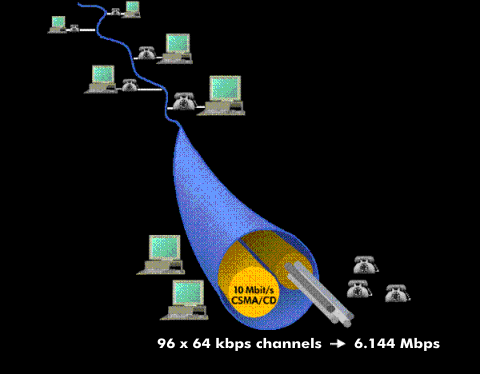isochronous Ethernet (isoENET)
Isochronous Ethernet is a hybrid network architecture that combines IEEE 802.3 with ISDN. For this purpose, an additional 6.144 Mbit/s transmission capacity has been added to the 10 Mbit/s for Ethernet for the isochronous transmission ofdata. Isochronous services are applications such as video or audio whose transmission requires the real-time capability of the underlying network.
The additional 6.144 Mbit/s transmission speed is structured into 96 B-channels of 64 kbit/s each and one D- channel for signaling.
The protocol used by the D channel for establishing and terminating the isochronous data links is the same as in classic ISDN Q.931. The 96 B channels can be used individually or cascaded. Since the isochronous data channels are operated completely separately from the 10 Mbit/s bandwidth of the Ethernet, the transmission of conventional data using the CSMA/ CD method is not affected by the real-time applications.
In order to also be able to operate isoENET, which is being standardized in IEEE Working Group 802.9, over Category 3 UTP cables, 4B5B coding is used instead of Manchestercoding. The greatest strength of isoENET is its compatibility with 802.3 networks and with ISDN.

